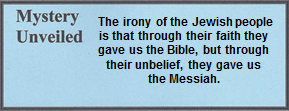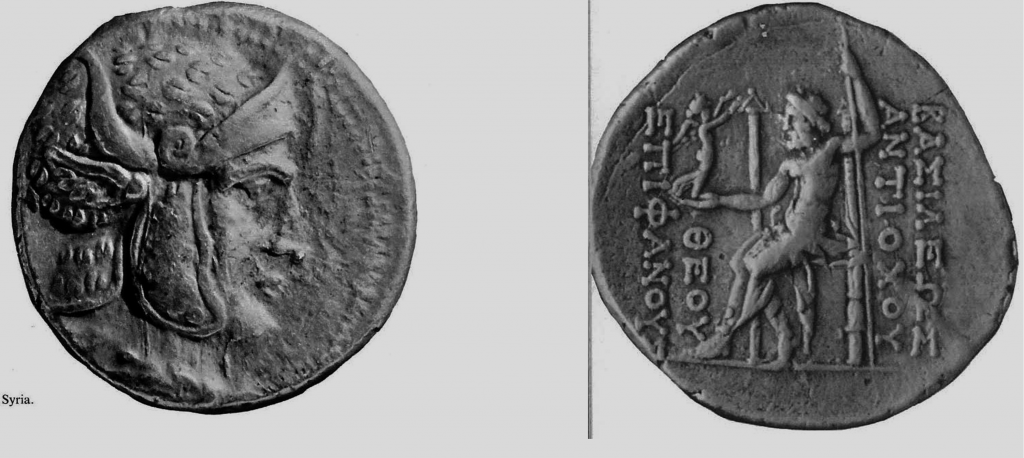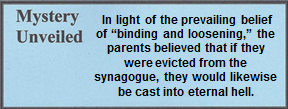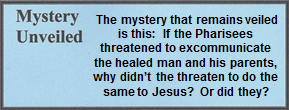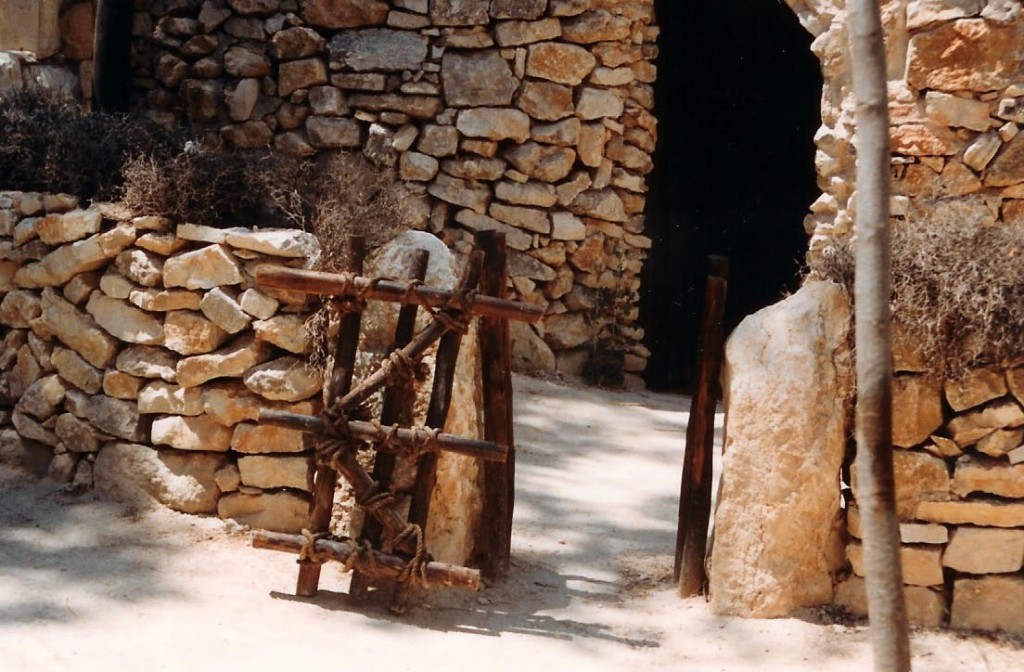11.02.21 Jn. 9:1-12 Jesus at the Pool of Siloam
HEALING THE MAN BORN BLIND[1]
1 As He was passing by, He saw a man blind from birth. 2 His disciples questioned Him: “Rabbi, who sinned, this man or his parents, that he was born blind?”
3 “Neither this man nor his parents sinned,” Jesus answered. “This came about so that God’s works might be displayed in him. 4 We must do the works of Him who sent Me while it is day. Night is coming when no one can work. 5 As long as I am in the world, I am the light of the world.”
6 After He said these things He spit on the ground, made some mud from the saliva, and spread the mud on his eyes. 7 “Go,” He told him, “wash in the pool of Siloam” (which means “Sent”). So he left, washed, and came back seeing.
8 His neighbors and those who formerly had seen him as a beggar said, “Isn’t this the man who sat begging?” 9 Some said, “He’s the one.” “No,” others were saying, “but he looks like him.”
He kept saying, “I’m the one!”
10 Therefore they asked him, “Then how were your eyes opened?”
11 He answered, “The man called Jesus made mud, spread it on my eyes, and told me, ‘Go to Siloam and wash.’ So when I went and washed I received my sight.”
12 “Where is He?” they asked.
“I don’t know,” he said.
After Jesus declared His eternal existence (Jn. 8:48-59 above), He proceeded to perform a profound miracle – a messianic miracle that had a challenging effect on the Jewish leadership. This miracle forced them to decided whether Jesus was the expectated messiah. However, it was also an interesting historical reflection upon the Jewish people, which is why some Bible critics said the miracle never happened, but rather, it was simply a metaphor written as if it was an historical event.[2] However, with the discovery of the Pool of Siloam, the argument of the critics fell apart.
The Pool of Siloam had a most unique feature: Its water originated at the Virgin’s Fountain, a/k/a the Gihon Spring.[3] From there the water flowed through the 1,780 foot long Hezekiah’s Tunnel into the two sections of the Pool of Siloam, and then into a creek in the Kidron Valley. The ancient pool consists of a lower pool, known as the Pool of Shelah, and an upper pool known as the Pool of Siloah.[4] It is mentioned three times in the Hebrew Bible.[5] The miracle of this healing was the fulfillment of a prophecy of Isaiah, who said,
Then the eyes of the blind will be opened,
and the ears of the deaf unstopped.
Isaiah 35:5
11.02.21.Q1 Why did Jesus use spit and mud to heal the blind man in John 9:1-12?[6]
Scholars have pondered this question for centuries.[7] In ancient times, eyes were sometimes healed with the application of a cream or salve; other times with spit and mud. Could it be possible that Jesus purposefully mimicked existing methods? Admittedly, nearly all evangelical scholars would demand a negative answer to this question. Furthermore, why would He have done so? He already demonstrated so many healing miracles where other so-called healers failed. To make the possible answers more challenging, the healing of a blind man in Mark 8:22-26 (10.01.28) is the only recorded miracle that was performed in two stages. In that case, Jesus placed spittle on his eyes, but not mud.
After considerable research, a possible answer remains to be a little more than an educated guess. The use of spit and mud was clearly out of the ordinary routine of miracles that Jesus performed, and there may have been more to it than to simply demonstrate His Messianic calling and divine authority. The religious leaders were nearly petrified at this miracle and, as if to add insult to injury upon Pharisaic legalism, this healing was not performed in a private home or environment, but in a public forum where it received maximum attention. As stated previously, Jesus did not come to be a Healer of human bodies, but to be a Healer of souls. Miracles, with Jesus, were only a means to a higher end; credentials to enforce the reception of spiritual truth.
The Greeks, Romans, and other people groups used spit and mud because there was a widespread applied faith in its healing potency. Yet no records have been uncovered that verify a miraculous healing by this common ritual (except by those who claimed to be healers). Some scholars believe that the ancients thought of it as a cure for eye diseases, but not blindness.[8] However, the Roman writer Suetonius [below], in a discussion of Vespasian, said that the emperor used spittle to restore the sight to a blind man.
Vespasian as yet lacked prestige and a certain divinity, so to speak, since he was an unexpected and still new-made emperor; but these were also given to him. A man of the people who was blind and another who was lame came to him together as he sat on the tribunal, begging for the help for their disorders, which Serapis had promised in a dream; for the god declared that Vespasian would restore the eyes, if he would spit upon them, and give strength to the leg, if he would condescend to touch it with his heel. Though he had hardly any faith that this could possibly succeed and, therefore, shrank even before making the attempt, he was at last prevailed upon by his friends and tried both things in public before a large crowd; and with success.
Suetonius, The Deified Vespasian 7:69-121
It is noteworthy that Suetonius stated that the miracle was before a large crowd. Clearly Vespasian was seen as a god; especially since he claimed to be one and those who argued against it put their lives in danger. However, common sense argues against this miraculous claim. If the emperor was so successful in healing others, why didn’t thousands come to him for a healing as they did to Jesus?
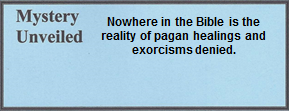
Tacitus also has an account of Vespasian performing a healing, but it could be the same as reported by Suetonius. It was not uncommon that one historian’s book was based, in part, on the work of another writer.[9] Tacitus said that a blind person in Alexandria asked Vespasian for a healing remedy, prayer, and to sprinkle his cheeks and the balls of his eyes with saliva.[10] He wrote of an event when Vespasian visited Alexandria and two men approached him. One was blind and the other had a diseased hand, but both claimed that their god sent them to the monarch. Vespasian initially refused. But the blind man persisted to ask that his eyes be “moistened with spittle,” and the crippled man asked him to step on his diseased hand. Vespasian finally gave in and did as was requested of him, and
“The hand immediately recovered its power; the blind man saw once more. Both facts are attested to this day, when falsehood can bring no reward, by those who were present on the occasion.”
Tacitus, Histories 4:81
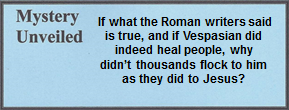
Both were supposedly healed immediately. Yet how interesting it is that Tacitus made a comment about possible individuals who might think the report at being false. (Jesus never said anything like that.) His comment clearly suggests that it is really false. Nonetheless, it is it was about this time that Jesus apparently used a method and custom common of His day.[11]
Concerning another account from the first century, Aulus Persius Flaccus (34-62) was a Roman author of satires and poetry. He wrote of a woman and said,
She takes the babe from the cradle, and with her middle finger moistens its forehead and lips with spittle to keep away the evil eye.
Persius, Satire 2:32-33
Pliny the Elder (23-79) was a scholar, lawyer, soldier, and authored an encyclopedia of natural history that filled 37 books. His work remained unchallenged for nearly fourteen centuries but is now obviously rejected by modern science. His work gives insight into first century Roman life.[12] Among his countless comments, he said,
We are to believe that by continually anointing each morning with fasting saliva, inflammations of the eyes are prevented.
Pliny the Elder, Natural History 18:7
While these pagan accounts are obviously mythical, whether there was a healing is hardly the point, because many believed it had actually occurred. Nowhere in the Bible is the reality of pagan healings and exorcisms denied. When Jesus came to heal, He did so by His divine power that was in sharp contrast to pagan formulas and rituals. Furthermore, Jesus healed some who were blind from birth, indicating that their illness was not a temporary medical condition from which they could have naturally recovered.
- An opinion of this writer is that Jesus might have healed the man with spit and mud because others claimed to have done the same with a similar method, but Jesus actually healed where others failed.
- A thought worthy of consideration is this: just as the ten plagues by Moses were against the gods of Egypt, could it be possible that some of the miracles performed by Jesus were against the Greco-Roman gods? Jesus lived in a Jewish community with pagan Greek influences. He not only needed to prove to orthodox Jews who He was, but also to the Hellenized Jews who accepted many Greek ideologies.
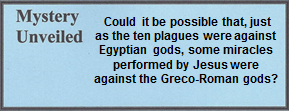
- Another opinion is that the use of mud reflects upon the creation of Adam in the Garden of Eden, and Jesus symbolically recreated the man’s vision so he could see his Creator. But that fails to sufficiently answer “why”?
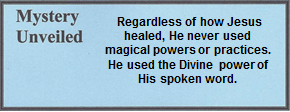
- However, a popular book, Tobit may give a clue to this method of healing. The apocryphal book may best be described as a novel within the culture of the second century B.C. It reflects folklore, sound moral teaching, and is a romantic story in which, at one point, the angel Raphael tells Tobias to apply the gall of the fish to the blind eyes of his father Tobit. The segment of the story is as follows:
Raphael said, “I know, Tobias, that your father will open his eyes. You therefore must anoint his eyes with gall; and when they smart he will rub them, and will cause the white films to fall away, and he will see you.”
Then Anna ran to meet them and embraced her son, and said to him, “I have seen you, my child; now I am ready to die.” And they both wept. Tobit started toward the door and stumbled. But his son ran to him and took hold of his father and he sprinkled the gall upon his father’s eyes, saying, “Be of good cheer father.” And when his eyes began to smart he rubbed them, and the white films scaled off from the corners of his eyes. Then he saw his son and embraced him, and he wept and said, “Blessed art thou, O God, and blessed are all your holy angels …”
Tobit 11:7-14[13]
All ancient people groups believed in healing by divine intervention.[14] It is well known that healers applied some type of ointment to the eyes of the blind. While Jesus at times simply touched the eyes of the blind, quite possibly here He mimicked the narrative in Tobit, simply to demonstrate that He truly was the Healer as opposed to others who attempted similar feats. But with this divine revelation the disciples, too, had their eyes of understanding opened. The healing power of Jesus was superior to the healing attempts of the best medicine man or magician of the day.
In another case, an inscription was found at the ruins of the temple of Asclepius on the island in the Tiber River in Rome. It is believed to have originated in A.D. 138 and has a reference to the healing of a blind soldier attributed, in part, to “eye salve.”
To the blind soldier Valerius (to whom)[15] Aprus the god commanded by an oracle to come and take the blood of a white rooster, to mix it with honey and eye salve, and to spread it on his eyes for three days. And he recovered his sight and came and presented an offering of thanksgiving to the god.
MEB / from SIG no. 1173[16]
Did the ancient eye salve really heal the blind soldier? The fact that he was a soldier, obviously, indicates that at one point he had excellent vision, yet no reason for his temporary blindness is given. If, in fact, there really was a soldier by the name of Valerius, in all probability his sight was restored in spite of the medical brew.
Historians have long said that many emperors and other monarchs claimed to be gods in order to tighten their fearful control on the general population. Stories were created in which they were said to have been born of a virgin or performed various miracles. As previously stated, if Vespasian indeed had the power to perform miracles, it is questionable as to why he did not perform more of them and why thousands of people did not follow and worship him as they did Jesus.
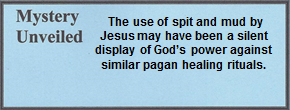
There are some distinct differences between ancient rulers, priests, and the ministry of Jesus. They are as follows:
- Ruling monarchs were proud, arrogant, and usually cared little for the common people. Jesus, on the other hand, loved everyone, was humble and demonstrated genuine care with compassion.
- While the pagans claimed to have healed only a few people, Jesus literally healed hundreds if not thousands. The pagans had no witnesses, whereas Jesus had multitudes of witnesses.
- As previously stated, claims of divinity and healings were used by rulers to solidify their power and control, while the demonstrations of healings by Jesus, along with His message, pointed people to the kingdom of God. Rulers demanded everyone recognize them as divine, whereas Jesus, by His actions, permitted observers to conclude whether He was divine.
- Possibly more important, the use of mud and spittle to make some eye salve was probably a silent attack against the pagans who used a similar method. Jesus quietly confronted the gods of the Greeks, Romans, and Hellenized Jews. He had untold numbers of witnesses who received healings or saw someone who received a healing. The pagans had only myths and a few testimonials of healings, that even they did not believe were true. In essence, He demonstrated His power over the demonic powers in a manner similar to that which God used when He sent the plagues upon Egypt fifteen centuries earlier. At that time, the plagues represented various Egyptian gods; this time Jesus demonstrated who He was.
- Pagan healers wanted as much public exposure as possible, while Jesus often told people not to tell others and avoided maximum public exposure.
The healing of eyes with saliva was a known remedy, even among the Jews. The Jerusalem Talmud Sorah 16,4) records the story of a Rabbi Meir and a wpman famous for her ability to heal sick eyes with her silva.[17] Ironically, those who carefully listened and observed Jesus recognized His attributes, while the leading Pharisees and Sadducees remained spiritually blind.[18] In agreement with the Pharisees, a Jewish writer a few centuries later gave instructions in the Talmud on how not to heal a blind person with spit and mud.[19] Obviously his directives were a subtle attack against Jesus.
Many theologians have suggested that since God created man from dirt in the Garden of Eden, Jesus used spit and mud to recreate the blind man’s eyes.[20] When the first Adam opened his eyes, he saw his Creator Jesus; when the blind man opened his eyes he saw his Healer Jesus. Regardless of the reason or method of healing Jesus used, it was obvious to the observing audience that His power and authority could have only come from God. Finally, the reason for the two-step healing of a blind man is discussed in 10.01.28.Q1.
“Rabbi, who sinned, this man or his parents?” The common thinking was that any disease or infirmity as this was the result of sin in the family.[21] This was not based on any Scripture, but an opinion that became a Pharisaic doctrine. Certain sins of the parents were thought to have resulted in specific physical ailments of leprosy or blindness in their children. This curse (Jn. 9:1-12) was considered typical evidence that sins were passed on to the proverbial “third and fourth generation.” In other cases, some Jews believed a child might sin in its mother’s womb. To support this argument, the rabbis referred to the struggle between Jacob and Esau prior to their births (Gen. 25:22).
In light of the fact that for four centuries there was not a single prophet in the land, there was extensive corruption in both the temple and government, and Hellenism was making great inroads into Jewish theology and lifestyles. It should not be surprising that superstition had increased significantly. One of those beliefs was that the moral state of a pregnant woman could be passed on to her unborn child. For this reason, it was believed that the apostasy of one of the great rabbis was caused by the sinful delight of his mother passing through an idol grove. So therefore, the community blamed her for the rabbi’s spiritual failure.[22] No wonder they asked, “Who sinned?”
“Born blind.” The reasons children were born with blindness were obviously unknown to the ancients, but modern scientists have been able to make an educated guess of one possible cause. The venereal diseases of gonorrhea and chlamydia are known to cause a number of ailments, and many babies born to mothers with such diseases are born blind.[23] It has been estimated that around 1900, about 30 percent of all blindness were the result of sexually transmitted diseases.[24]
A point of consideration is that: If the ancients believed that blindness could have been the result of a venereal disease that underscores their question of “Who sinned?” However, even more condemning is the increased probability that the blindness resulted from another cause, but the parents were suspected of this “sinfulness.” Regardless of the cause, to have a family member born blind was a horrible stigma. Even though the Jewish culture was socially conservative, their Hellenistic Jewish and Gentile neighbors did not hold the same values.
Most people who were blind became life-long beggars. They were not permitted in the inner sanctuary of the temple, but were usually seated near the entrance of a “holy place” such as the temple gate or along the road leading to the temple or a synagogue.[25] In this case, Jesus met a blind beggar in the Court of the Gentiles where He healed him, and told him to go and “wash in the Pool of Siloam.” He obeyed Jesus and immediately had strength for the long walk to the pool.
Amazingly, Jesus had never told him he would be healed, yet he was made whole. Since the miracle occurred during the Feast of Tabernacles, the pool was one of the most crowded places. As part of the religious rituals, an unusual number of priests were needed to perform the various services, one of which was to carry water from this pool to the altar. Hence, many priests who were not a part of the temple establishment were present and witnessed Jesus performing this messianic miracle.
A Small Escape from David Sandell on Vimeo.
The Talmud states that during the one week celebration of the Feast of Tabernacles, a procession went to the pool to bring water in a golden vessel to the temple.[26] There it was poured out as a libation of thanksgiving to God. John 7 indicates that Jesus attended the Feast and thaas t halfway through the festival, He went to the temple courts to teach the crowds that He was the living water (Jn. 7:34). Clearly, everyone’s attention was on the miracle and the message.
[1]. See comments by Rabbi John Fischer in 10.01.28.V where he discusses two unique methods of healing blind men including the event of John 9:1-12.
[2]. http://www.christianitytoday.com/ct2005.010.35.26.html. Retrieved November 26, 2005; In addition, on March 9, 2013, Dr. James H. Charlesworth of Princeton Seminary gave a report in Jerusalem in which he outlined several archaeological discoveries that support the historical reliability of the gospel of John. Essentially, he said that John knew the details of Jerusalem as it was prior to the A.D. 70 destruction, details that were unknown to archaeologists only a decade ago. SOURCE: Charlesworth, James H. “Gospel of John Backed by Archaeology.” Artifax. 28:3 (Summer, 2013), 11-12.
[3]. Josephus, Wars 5.9.4 (410).
[4]. Zondervan’s New International Version Archaeological Study Bible. (2005 ed.) 1739. See also 2 Chron. 32:2-8, 30; Isa. 22:9-11; 2 Kgs. 20:20; Wiseman, “Siloam.” 3:1452.
[5]. It is the Pool of Shelah in Neh. 3:15, the Waters of Shiloah in Isa. 8:6 and the Pool of Siloam in Jn. 9:7; Lightfoot, A Commentary on the New Testament from the Talmud and Hebraica. 3:343.
[6]. See comments by Rabbi John Fischer in 10.01.28.V where he discusses two unique healing methods of blind men including the event of John 9:1-12.
[7]. This writer does not have a firm answer, but has found other ancient writings in which the mud and water were said to have healed blindness. For whatever reason is given, it was Jesus who performed the true healing.
[8]. Edersheim, The Life and Times of Jesus the Messiah. 599.
[9]. An example is Josephus who said that some of his information on Herod the Great came from the writings of John of Damascus, who was Herod’s historian.
[10]. Tacitus, History 4:81.
[11]. Barclay, “John.” 2:42.
[12]. http://www.pbs.org/empires/romans/empire/pliny_elder.html. Retrieved December 7, 2013.
[13]. The book of Tobit is part of the Roman Catholic and Orthodox Bible, but is not in the Protestant Bible. Generally, it is classified as an apocryphal book by Protestant and Messianic Jewish scholars.
[14]. Atheists were all but unknown, and frequently mocked for their stupidity.
[15]. Clarification mine.
[16]. Cited by Boring, Berger, and Colpe, eds. Hellenistic Commentary to the New Testament. 284.
[17]. Cited by Tsvi Sadan, “He Spat on the Ground and made Clay with the Saliva” (Part 3) Israel Today. Oct. 2013. No. 171. 14.
[18]. Major, Manson, and Wright, The Mission and Message of Jesus. 813.
[19]. Jerusalem Talmud, Shabbat 108-120.
[20]. Zondervan’s New International Version Archaeological Study Bible. (2005 ed.). 1706.
[21]. There were four kinds of people that were considered as good as dead, and it was believed that in all four situations their situation was a divine judgment. They were the blind, the leper, the poor, and the childless.
[22]. Cited by Vincent, Word Studies in the New Testament. 2:181.
[23]. Today newborn infants receive a few drops of silver nitrate solution or antibiotic as a preventative solution.
[24]. Hobrink, Modern Science in the Bible. 16-17.
[25]. A few examples are: 1) The impotent man of Acts 3:2-10 was near the Gate Beautiful, also known as the Nicanor Gate. 2) The blind and lame people in the temple who asked Jesus for a healing were probably in the Court of the Gentiles (i.e., Mt. 21:14). 3) The man who was blind from birth probably met Jesus at one of the two southern temple gates (Jn. 9:1-8). 4) The blind man of Jericho were along the major road that festival caravans took to Jerusalem, and that is where they met Jesus. 5) Jesus also met a blind man at the Pool of Siloam, another place considered to be “holy.”
[26]. Babylonian Talmud, Sukkah. 4.9.z
